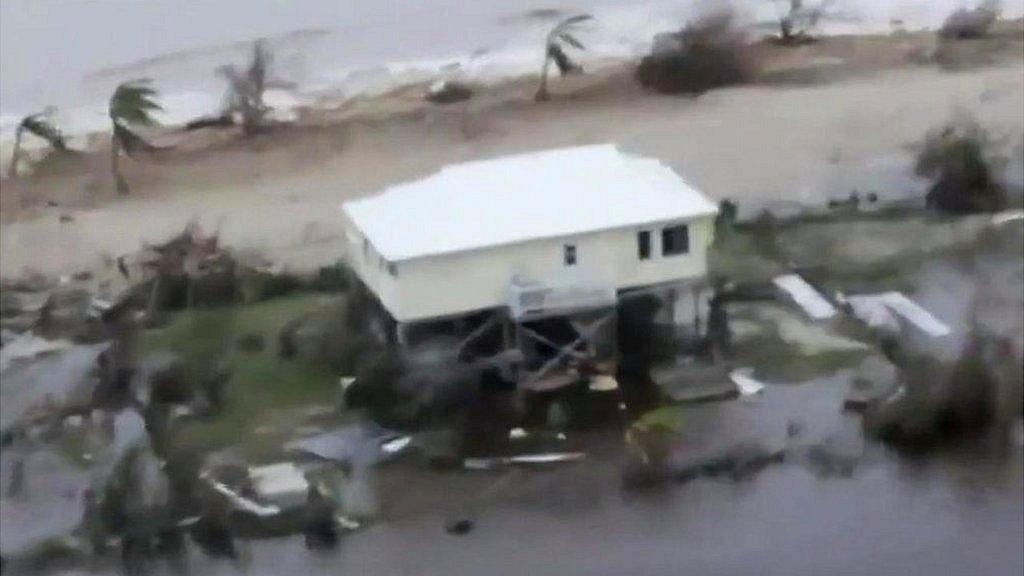Hurricane Irma: No such thing as a category six storm
- Published
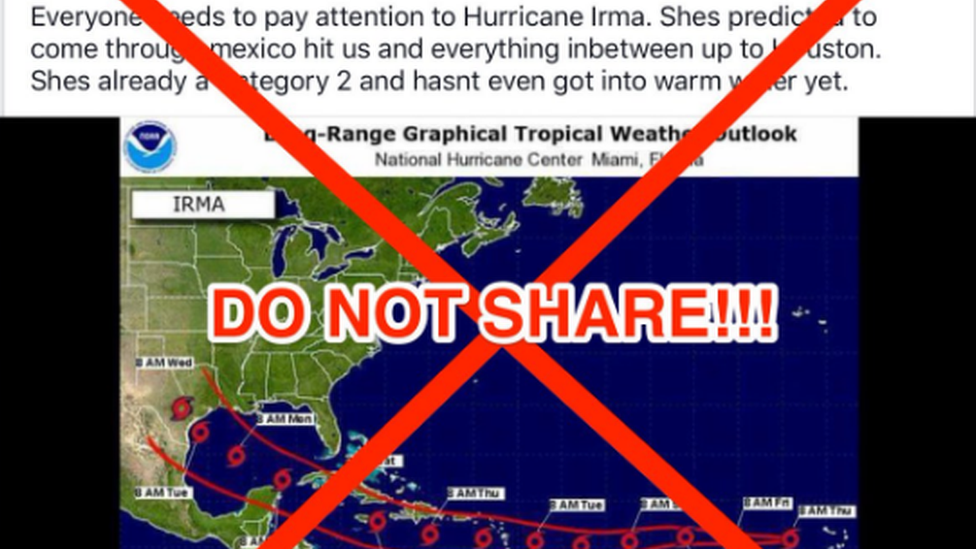
Meteorologists and social media users are issuing warnings about fake hurricane Irma news
Striking video and reports are emerging about Hurricane Irma catastrophically hitting the Americas - but don't believe everything you see.
As with Storm Harvey in Texas last week, fake news, videos and doctored images about Irma have spread rumours about the scale and path of the hurricane - which meteorologists have been keen to warn against online, external.
Irma, which is the most powerful Atlantic storm in a decade, has devastated parts of the Caribbean with wind speeds of 285km/h (180mph), leaving at least 10 people dead and reducing buildings to rubble.
Fake videos
One popular video posted on Thursday morning appears to show the force of hurricane winds hitting Puerto Rico, in the Caribbean, accompanied by howling winds which sound like a train engine. It was retweeted over 3,000 times.
Allow X content?
This article contains content provided by X. We ask for your permission before anything is loaded, as they may be using cookies and other technologies. You may want to read X’s cookie policy, external and privacy policy, external before accepting. To view this content choose ‘accept and continue’.
But Irma did not hit Puerto Rico directly, instead the hurricane passed by the island causing power cuts.
Matching footage, which appears to be from the British Virgin Islands was posted on Wednesday, external, seven hours ahead of the video labelled Puerto Rico.
However, this footage was posted on Twitter without sound. It was picked up by a Turkish meteorological site and later by video uploading platform LiveLeak.com, as well as other social media users, who described the scene as San Juan, Puerto Rico. At some point along the way, the soundtrack was added.
The result was confusion among Twitter users, some of whom accused @Whippodilly of "fake news" - while others asked about the video from Wednesday night, which they had seen labelled as Puerto Rico.
You might also like
Allow X content?
This article contains content provided by X. We ask for your permission before anything is loaded, as they may be using cookies and other technologies. You may want to read X’s cookie policy, external and privacy policy, external before accepting. To view this content choose ‘accept and continue’.
Another video, with almost 8,000 likes and retweeted more than 9,000 times, was also shared on Wednesday night by American weather reporter Jamie Erle, external, but matches footage which is over a year old and likely to be from Tornado Dolores in Uruguay, Craig Silverman of BuzzFeed tracked the spread of the video, external.
The video, external - with the caption 'Hurricane Irma' - has been viewed almost 28 million times on Facebook. It was later tweeted with the claim it was taken in Barbados.
Another video, external, with more than half a million views, claims to show the hurricane passing over Barbuda but - as Twitter user @PicPedant., external pointed out - the same YouTube account posted the same footage the day before, external, claiming it to be from the Virgin Islands, although a voice on the video claims it to be from "Tropical Storm Gonzalo," a hurricane which hit Bermuda in 2014.
Meanwhile, a Facebook Live purporting to show passengers trapped in an over-turned bus during Irma gained millions of views, only for the footage to match clips from Cyclone Vardha, which struck Chennai, India in 2016.
Not 'Category 6'
Reports regarding the strength of Irma and its path across the Atlantic have generated thousands of reactions online, as well as caused concern by residents who were led to believe they live in the storm's trajectory.
An article titled "Category 6? If Hurricane Irma Becomes The Strongest Hurricane In History, It Could Wipe Entire Cities Off The Map" published last week on the blog The Economic Collapse, external was shared more than two million times from blogs and Facebook pages such as Sons of Liberty Media and Freedom Outpost.
Although the article did not categorically state that the hurricane had been classified as 'Category 6', it implied there was serious scientific suggestion it should be, and some on Twitter understood it to be.
On Wednesday, the claim Irma was a category six storm was repeated by InfoWars' Alex Jones.
Allow X content?
This article contains content provided by X. We ask for your permission before anything is loaded, as they may be using cookies and other technologies. You may want to read X’s cookie policy, external and privacy policy, external before accepting. To view this content choose ‘accept and continue’.
Hurricanes cannot currently be categorised as category six according to the Saffir-Simpson scale - the highest rating is category five, which scientists describe as bringing catastrophic damage, external. However, many were led to believe the unusual force of Irma had caused it to be categorised as off the established scale.
One American meteorologist put the record straight on Twitter.
Allow X content?
This article contains content provided by X. We ask for your permission before anything is loaded, as they may be using cookies and other technologies. You may want to read X’s cookie policy, external and privacy policy, external before accepting. To view this content choose ‘accept and continue’.
Last week rumours spread that Houston, Texas was going to receive a second battering from hurricane winds and rain, after photoshopped images appeared of Irma's path through the Americas.
The National Oceanic and Atmospheric Administration (NOAA), who monitor meteorological conditions in America, reposted a tweet, external from its National Weather Service account, warning about fake weather forecasts. It came after a Facebook post showing the path of Irma hitting Houston, which was hit by Storm Harvey last week, was shared almost 40,000 times.
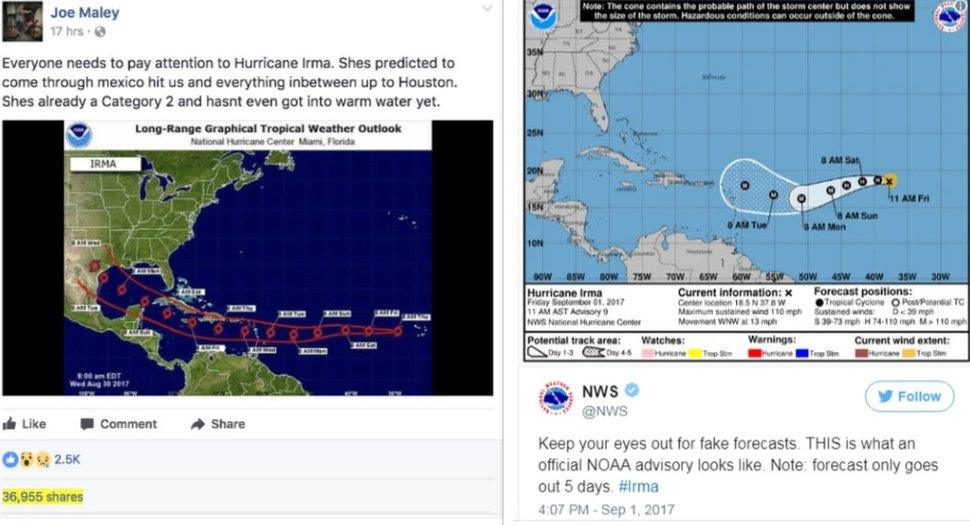
A popular Facebook post (L) posted a picture of Irma heading for Houston Texas. NOAA (R) tweeted a warning about fake forecasts with an official image of the hurricane's trajectory.
As Irma is predicted to hit more of the Caribbean and the southern coastal areas of the United States by the weekend, it is likely that fake news will continue to come with it.
- Published7 September 2017
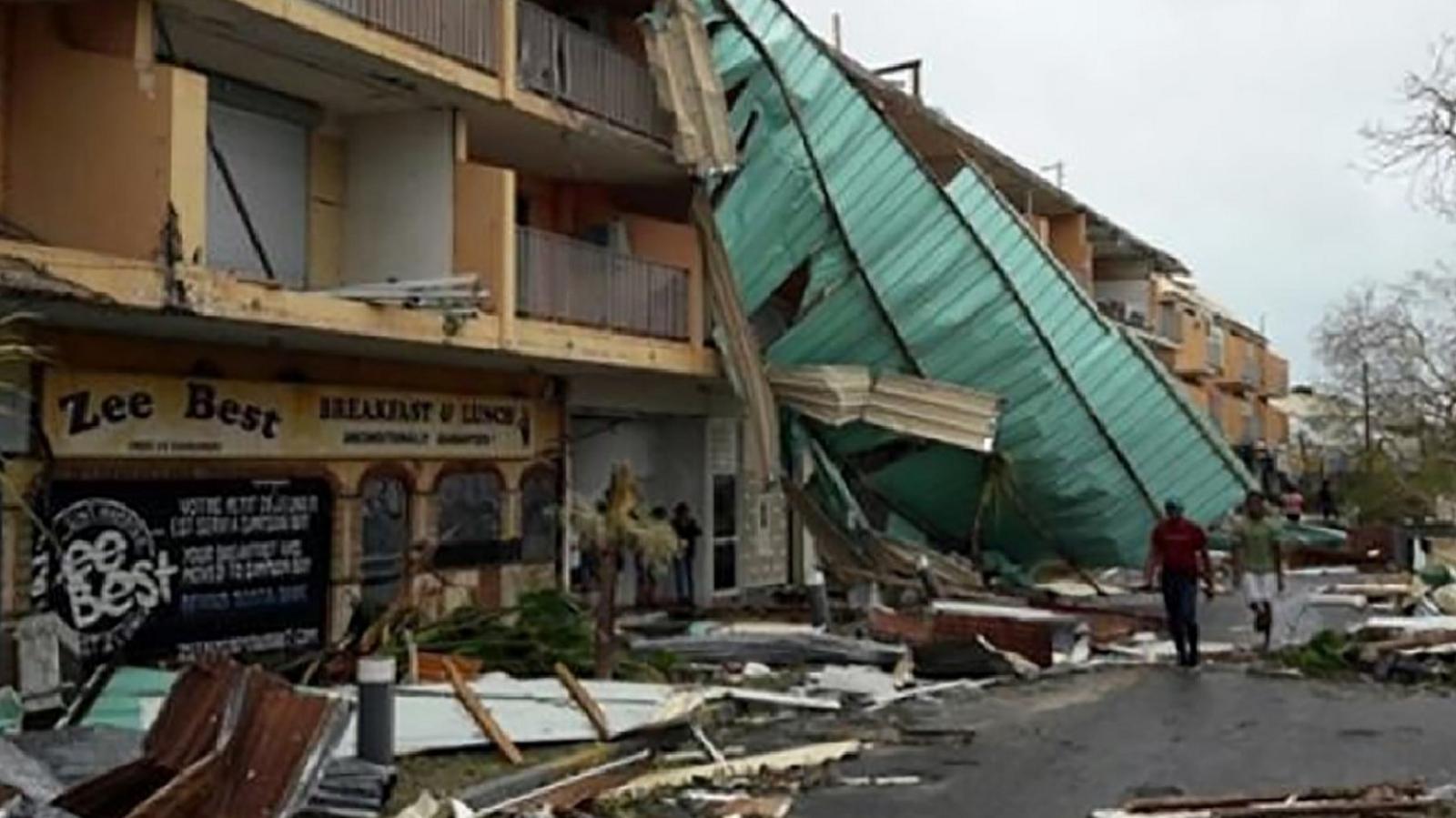
- Published6 September 2017
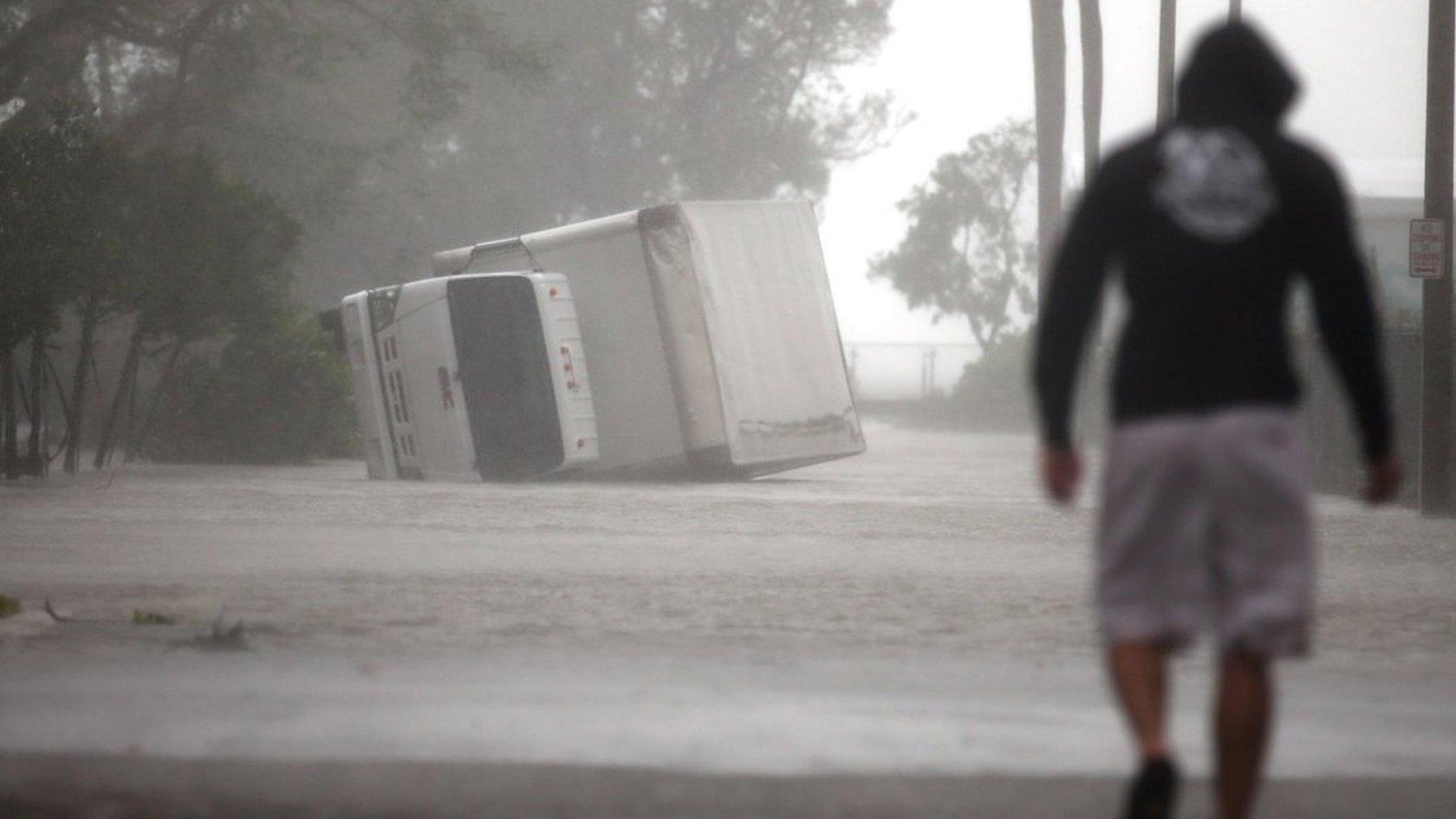
- Published8 September 2017
- Published7 September 2017
